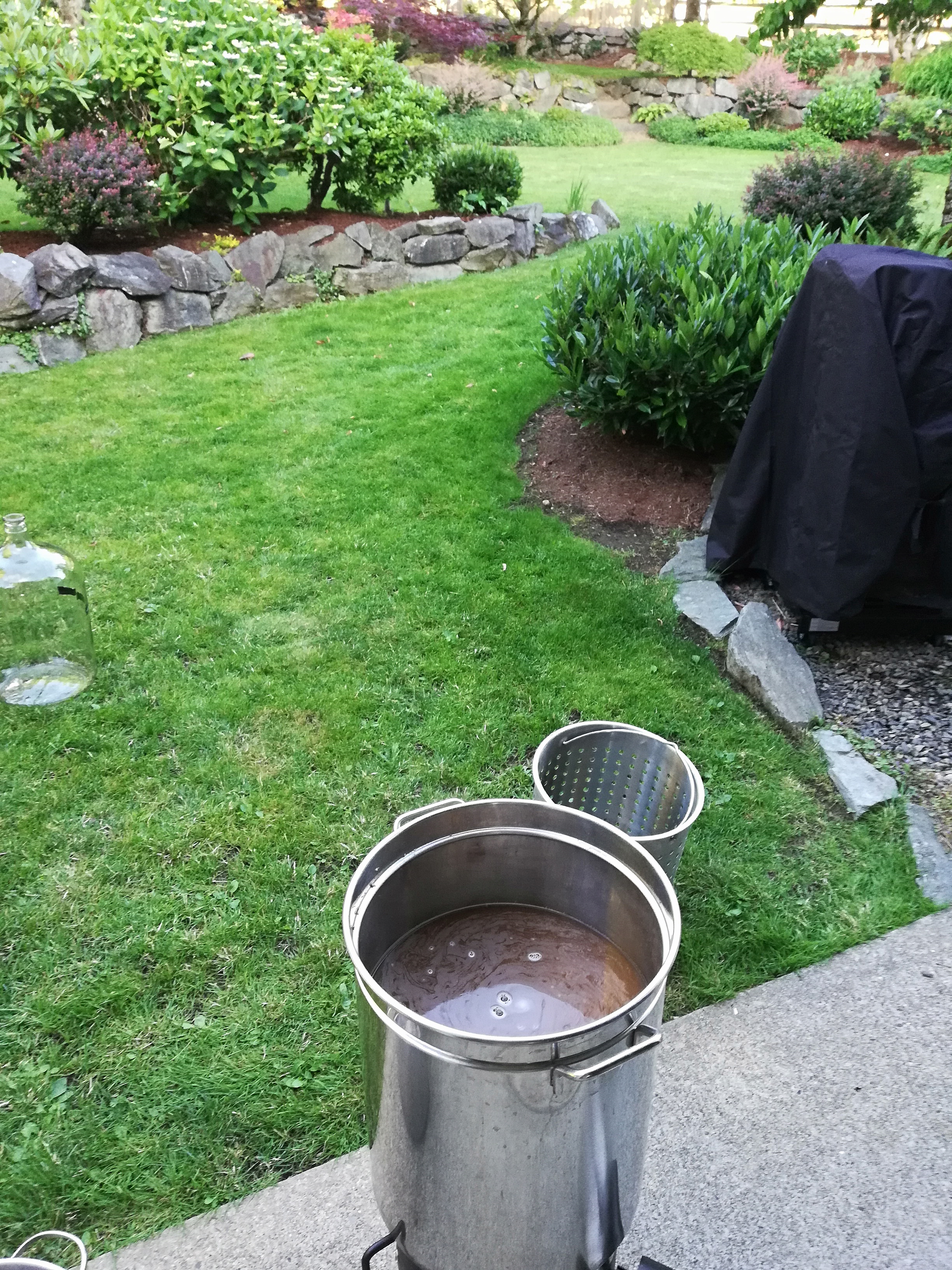Washington_Brewologist
THE PNW BIAB BrewOlogist
Hey guys! So I just got done checking up on the beer I brewed on July 2nd(8 days ago) and have a few questions about my findings. The recipe was the Raging Irish Red Ale recipe gifted to us by user Mysticmead back in 2011. To make sure I wasn't just replicating the same recipe I substituted the 1oz of crystal hops with 1 oz of Hallertau for the first wort addition. And due to the lack of CaraAroma at my LHBS, I had to sub it out with crystal-120. Here's what my brew-day looked like:
Fermentables:
2-Row Pale Malt 9 lbs
Crystal Malt-120 1 lbs
Carapils 8.0 oz
Melanoiden Malt 8.0 oz
Raw Unfiltered Honey 1 lbs @flame out (stirred for 10 minutes)
Hop Additions:
Hallertau 1.00 oz @ First Wort
Cascade 1.00 oz @ 30 minutes left
I live in Bellingham Washington where we have really soft water so I added my usual dose of Calcium Chloride, Epsom salt, gypsum and a dash of baking soda.
Brew Day was a beautiful Washington summer day!

This happened to be the first beer that I used a starter on and thanks to me not checking the little box that reads: Used Stir Plate? (in beersmith) I think I might have made a starter with close to 330 billion cells (2 liter-starter) instead of the 0.95-liter that beersmith suggested. I suppose my first question is:
Is overshooting my pitching rate by this much a bad thing?
Yeast cells that were needed to fully ferment was around 227 and I most likely had over 330 billion.
The yeast definitely didn't seem to mind. 4 hours after pitching I was beginning to see signs of fermentation and by the next day, it was going crazy.

This was the morning after brew-day.

This was taken a few hours later on the same day.
I was pleasantly surprised to see the fermentation going so hard. All of my previous batches(No starters) have taken much longer to start and all have had a much smaller krausen.
I put the beer into its favorite shirt and sat him right next to his buddy who was still fermenting.

My main question has to do with how fast a beer that has had a starter pitched in it (a big one at that) will be done and ready to keg. I took a gravity reading today and one yesterday and both readings suggested the beer had reached its final gravity of 1.010.
If a beer has reached its FG at 8 days into fermentation, is it ready to bottle or keg? What would be the benefit of letting it get closer to the usual 2-weeks that I give my ales?
Fermentables:
2-Row Pale Malt 9 lbs
Crystal Malt-120 1 lbs
Carapils 8.0 oz
Melanoiden Malt 8.0 oz
Raw Unfiltered Honey 1 lbs @flame out (stirred for 10 minutes)
Hop Additions:
Hallertau 1.00 oz @ First Wort
Cascade 1.00 oz @ 30 minutes left
I live in Bellingham Washington where we have really soft water so I added my usual dose of Calcium Chloride, Epsom salt, gypsum and a dash of baking soda.
Brew Day was a beautiful Washington summer day!

This happened to be the first beer that I used a starter on and thanks to me not checking the little box that reads: Used Stir Plate? (in beersmith) I think I might have made a starter with close to 330 billion cells (2 liter-starter) instead of the 0.95-liter that beersmith suggested. I suppose my first question is:
Is overshooting my pitching rate by this much a bad thing?
Yeast cells that were needed to fully ferment was around 227 and I most likely had over 330 billion.
The yeast definitely didn't seem to mind. 4 hours after pitching I was beginning to see signs of fermentation and by the next day, it was going crazy.

This was the morning after brew-day.

This was taken a few hours later on the same day.
I was pleasantly surprised to see the fermentation going so hard. All of my previous batches(No starters) have taken much longer to start and all have had a much smaller krausen.
I put the beer into its favorite shirt and sat him right next to his buddy who was still fermenting.

My main question has to do with how fast a beer that has had a starter pitched in it (a big one at that) will be done and ready to keg. I took a gravity reading today and one yesterday and both readings suggested the beer had reached its final gravity of 1.010.
If a beer has reached its FG at 8 days into fermentation, is it ready to bottle or keg? What would be the benefit of letting it get closer to the usual 2-weeks that I give my ales?


